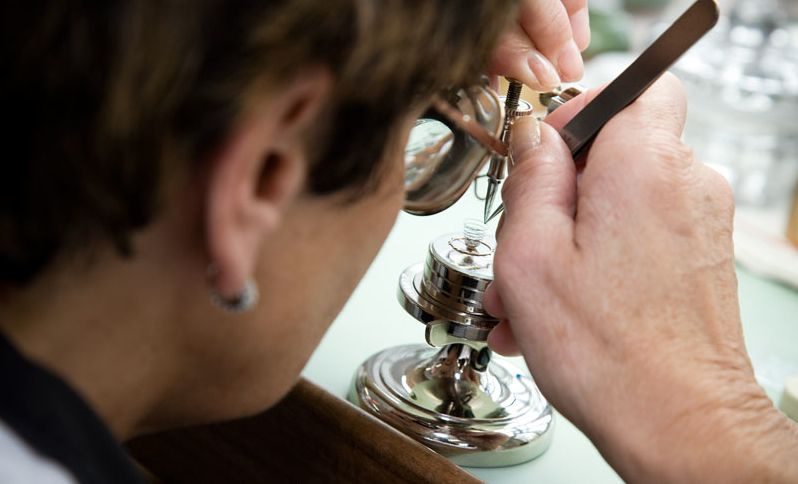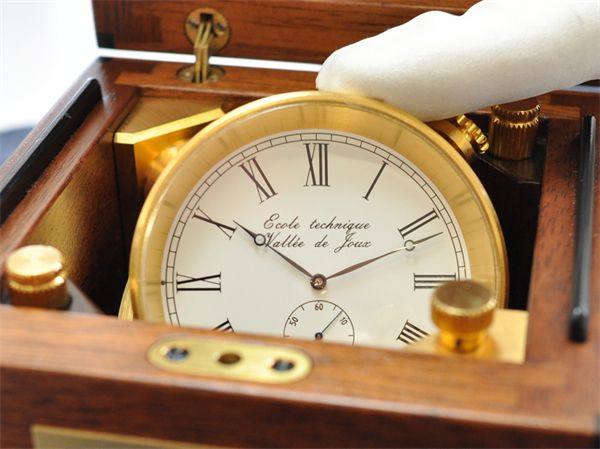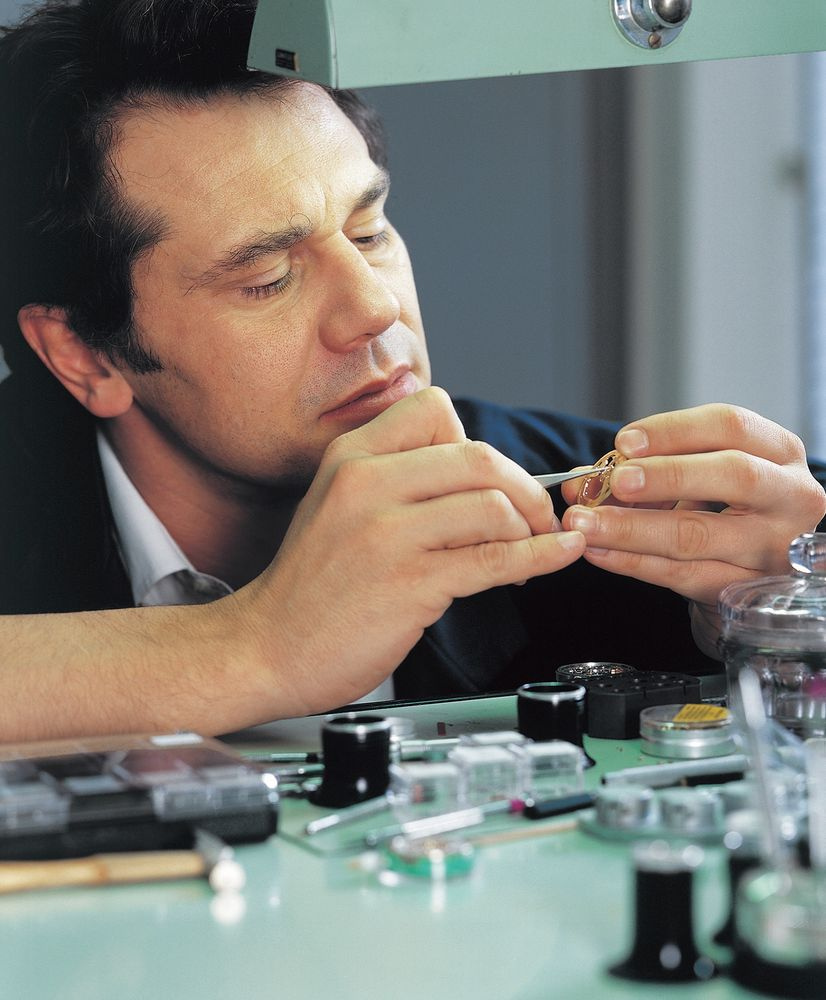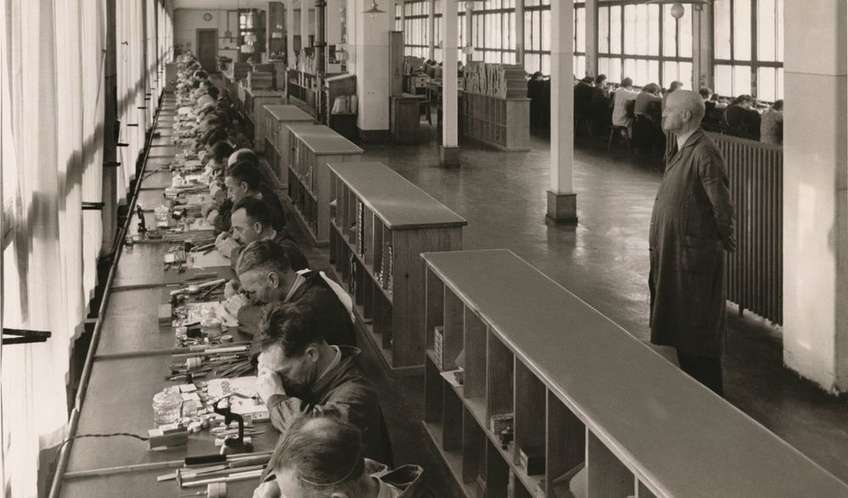

Watchmaker, more than just a profession
Ever since the revival of mechanical horology, in less than forty years, small hands have become gold fingers, manual activities have been set up as fine crafts.
Since 200 years, watchmakers were formatted to improve the precision of their mechanisms. One day, the quartz came, much more precise than the best set calibres. The Japanese got down to it as from the end of the sixties. Many bosses believed in it to the point of staking everything on this technological revolution. They were wrong, as the sector would lose two-thirds of its jobs within ten years, which would bring with its decline the irremediable loss of historical industrial treasures. The factories, having each their own production of mechanical movements, closed one after the other. What parent would therefore have encouraged their child to become a watchmaker?

Already, with this economical tsunami, becoming a watchmaker rhymed with the lack of means to do something else. Monique Wyssmüller, established star today at Montblanc in Villeret, remembers. She who dreamed of becoming a saleswoman or a hairdresser… became a watchmaker! A case-maker father, a hand-fitter mother, five watchmaker uncles…These studies cost less all the more so as some companies co-financed the schooling and the equipment, in return for compulsory hiring contracts.
It is thus La Longines that allowed her to become a timer and to buy herself this famous gauged machine at l’École d’Horlogerie, which she cherishes today, 50 years later. A machine, which in 2012, still gives life to mechanical watches by gauging the running of their balance-spring. She carried it along up to Asia where she animated events reserved to fascinated collectors. Her profession has become so rare that she allowed herself to be convinced to reenlist. Between two long-haul trips, she took up the factory life again and gave up her retirement.
You need to study four years at horology school to become a watchmaker. The student must first learn to manufacture their own tools before becoming capable of manufacturing their own timepiece, named “montre école ». The temporary exhibition of the Espace Horloger at le Sentier is proof of this tradition.

Newly renovated, the museum presents a collection of these student watches until May 2013, including important names of the Vallée, such as Philippe Dufour. In the proximity of the École d’Horlogerie de la Vallée de Joux, it is a sensible way to continue a visit, which starts with a high tech room dedicated to 24 watchmaking disciplines, because the profession is manifold. Mathias Buttet, the present responsible of research and development at Hublot, picked out a sad reality, despite the generous hirings: depending on the opening found, the students forget everything that they have learned within 3 to 4 years! This is due to the fact that they sometimes – another facet of factories - find themselves at the same post practicing the same operation on a daily basis.

Every watchmaker is not as lucky as a Franck Muller, a Michel Parmigiani, a François-Paul Journe or an Antoine Prezziuso, to be practicing the restoration of ancient pieces after their training.
Yet, it is the school of excellence. This is so because to confront with the heritage of the former days’ masters, their creative ingenuities, means being obliged to recreate by hand a missing or damaged piece, like it was learned in the curriculum. Thus, mastering the subtlest of complications or even inventing new ones.
3’200 PERSONS TO TRAIN UNTIL 2016
The professional training stakes are high. According to a survey of the Convention Horlogère Suisse* (CP), which analyzed twenty-some professions and bet on dual training, there will be a 15% increase of its manpower by 2016. In the 5 years to come, it will hire 3’200 new collaborators.

Concerned: the micromechanic, +26%; the cadranographe, +23%; the watchmaker, +22-25% according to the three variants (watchmaker, service watchmaker, watchmaker in the industrial field). The predictable increase concerns the assemblers in service watchmaking (+19%), the draughtsmen in microtechnique (+17%). The CFC and AFP trainings connected to movements are the ones that will be most in demand: 712 watchmakers and 702 watchmaking operators are awaited. On the superior training side, an additional 169 technicians and 148 engineers will be needed.
As for polishers and micromechanics, professions suffering from an image deficit, they will be the subjects of campaigns for youth.
*More info: www.cpih.ch








